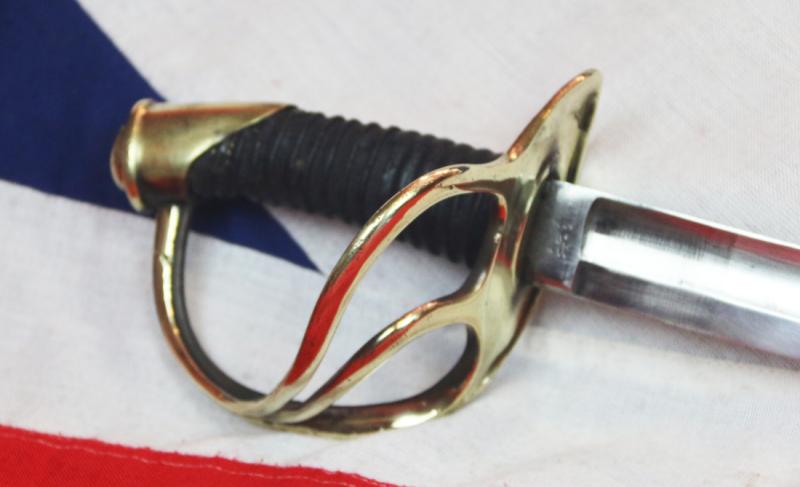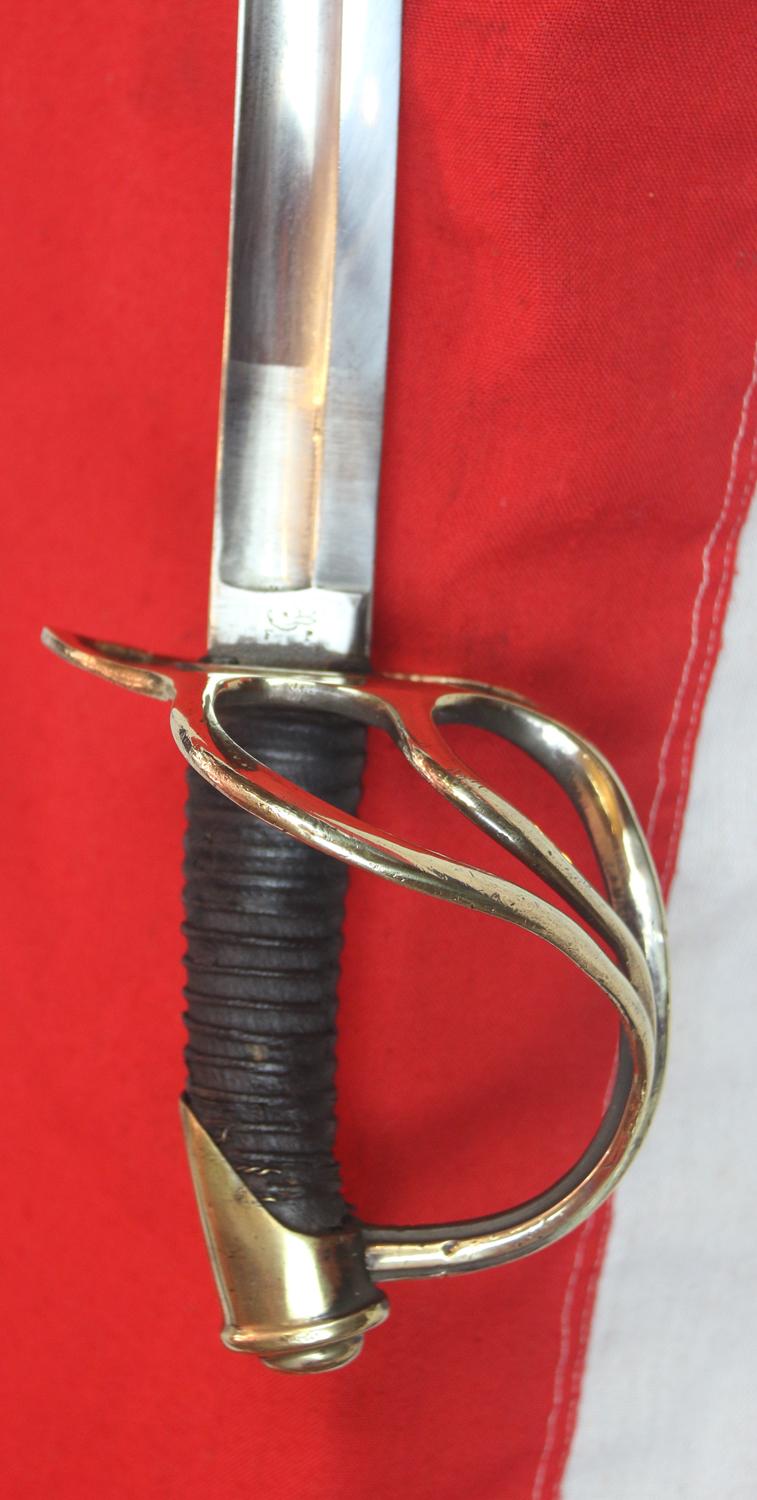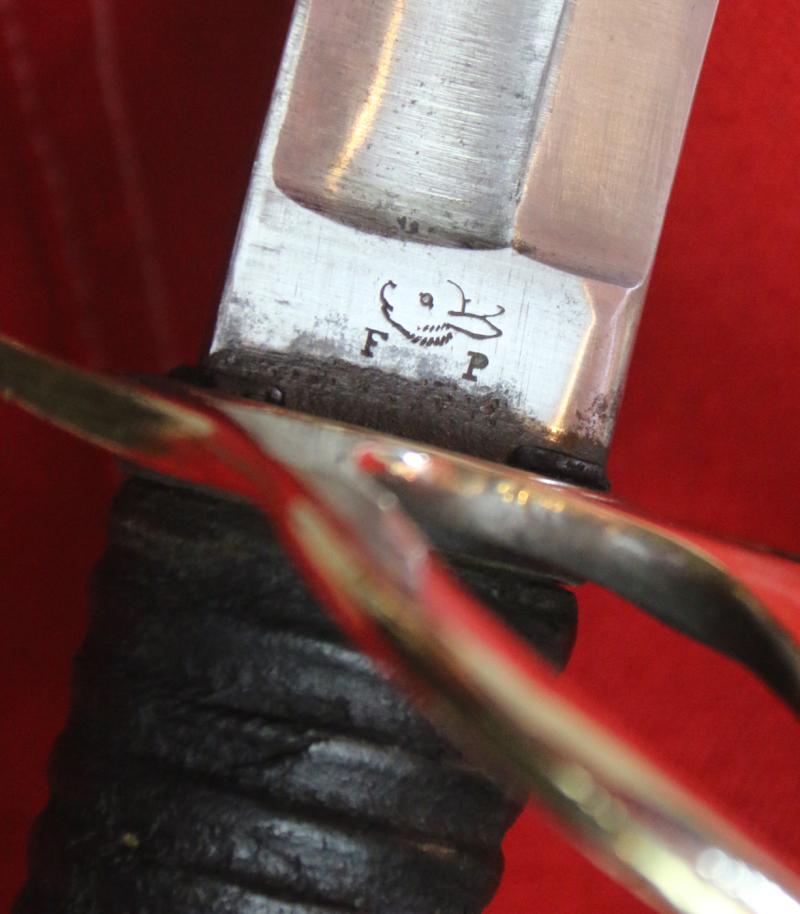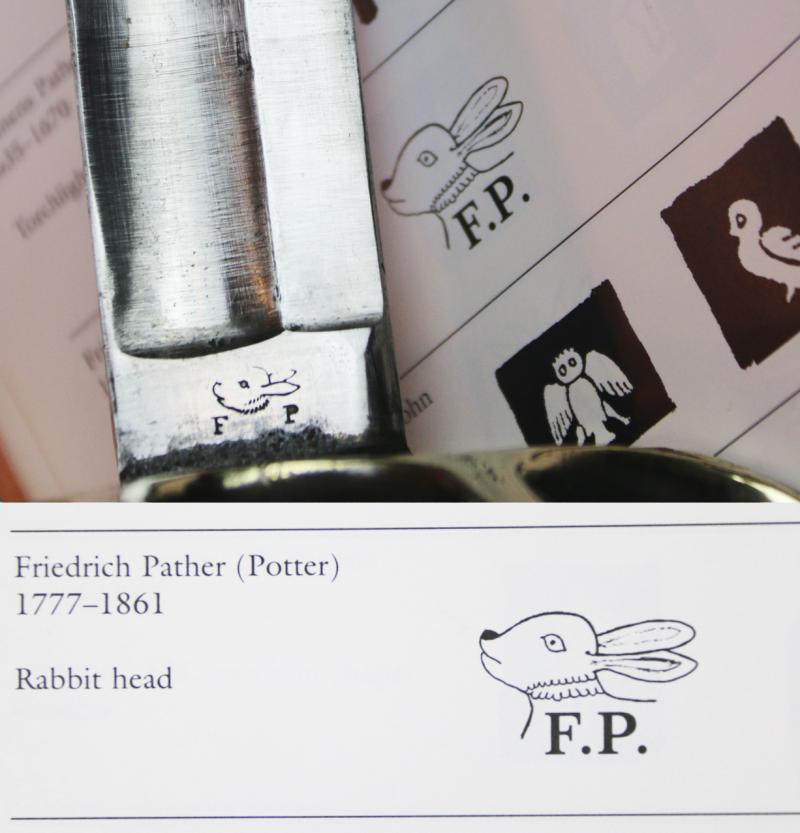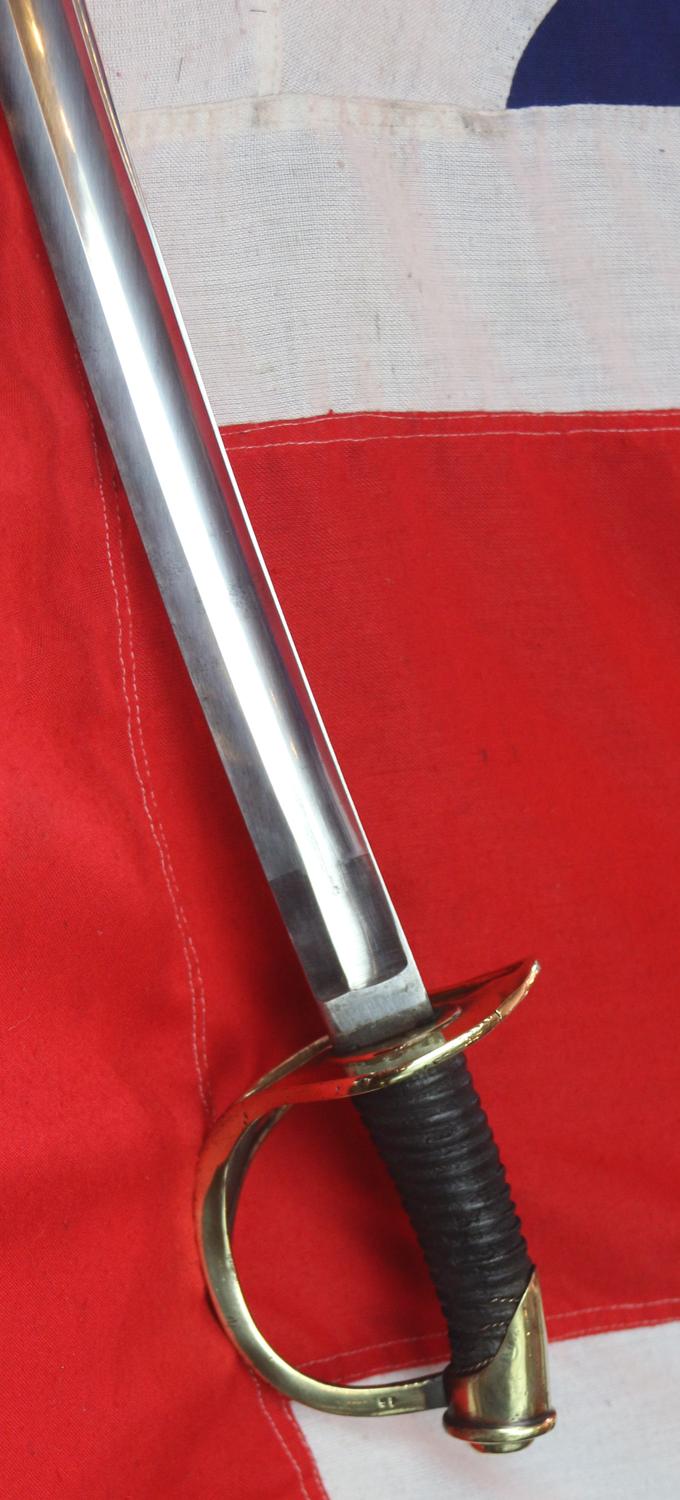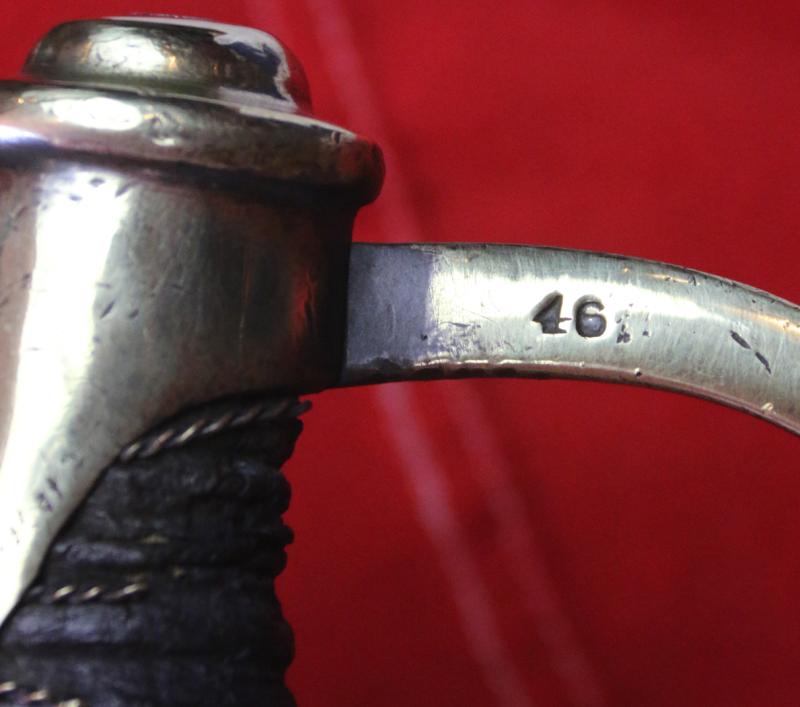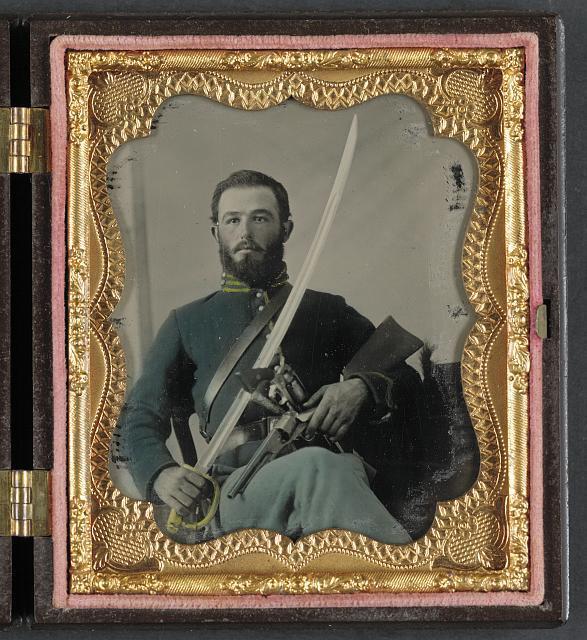An American Civil War Union Trooper's Sword by Rare Maker Friedrich Potter, Made and Supplied During The First Part of the Early War in 1861
A very good condition sword indeed, and amazingly the blade still has its original cross grain counter polish at the forte section of the blade. The maker mark "Hare's Head" logo is for Friedrich Potter, a smaller German born sword maker, that had contracts to supply the Northern States America in the Civil War, cavalry, infantry and musician's swords, but his company closed down in 1861, so only a limited number satisfied his contracts. His company traced its origins in Solingen back to 1580. Leather bound grip, and traditional three bar brass hilt.
Cavalry were forces that fought principally on horseback, armed with carbines, pistols, and especially sabres. Only a small percentage of Civil War armed forces of both sides met this definition—primarily Union mounted forces in the Eastern Theatre during the first half of the war. Many Southern State’s Confederate cavalry forces in the East generally carried neither carbines nor sabres. A few Confederate regiments in the Western Theatre carried shotguns, especially early in the war, and of course many did use sabres but for the South they were in very short supply. In the second half of the war, most of the units considered to be cavalry actually fought battles using the tactics of mounted infantry. An example of this was the celebrated "Lightning Brigade" of Col. John T. Wilder, which used horses to quickly arrive at a battlefield such as Chickamauga, but they deployed and fought using standard infantry formations and tactics. By contrast, at the Battle of Gettysburg, Federal cavalry under John Buford also dismounted to fight Confederate infantry, but they used conventional cavalry tactics, arms, and formations.
At the time of the Civil War, the cavalry had five major missions, in rough priority:
1.Reconnaissance and counter-reconnaissance screening
2.Defensive, delaying actions
3.Pursuit and harassment of defeated enemy forces
4.Offensive actions
5.Long-distance raiding against enemy lines of communications, supply depots, railroads, etc. After the civil war the swords were retained for use by the cavalry regiments, that remained in service, in the wild west frontier campaigns, usually against native American Indians. No scabbard
Code: 25244
695.00 GBP




